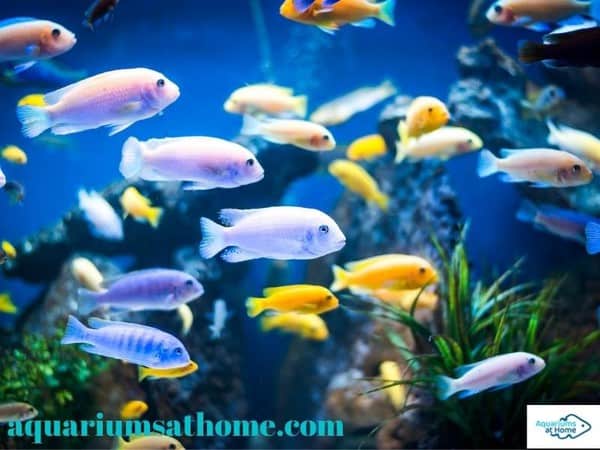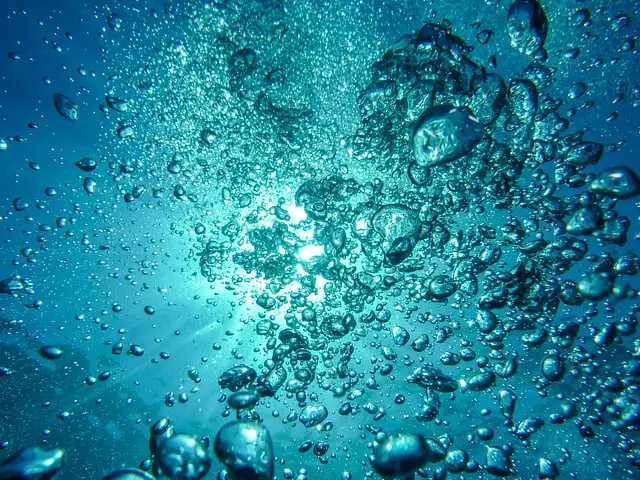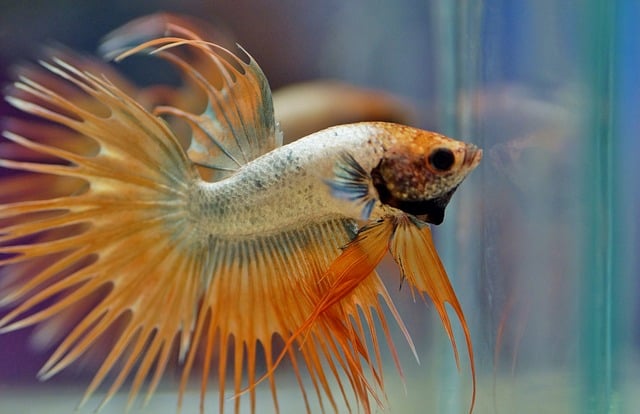If you’re new to the aquarium hobby, you must be aware that ammonia poisoning is a very real, very serious threat to fish. If you’re establishing a new tank and its still in the cycling process, then this is when ammonia levels tend to be at their highest and most dangerous. Right now, you may be curious at to what the typical signs of ammonia stress in fish are? Well, the answer is…
There are 10 signs of ammonia stress in a fish tank. These include aggression; hiding; gasping at the surface; hovering near the bottom; flattened fins; inflated gills; bulging eyes; swollen anus; lethargy; and loss of appetite. If you notice any of these behaviors in your fish, you must act immediately and test the water as high levels of ammonia are toxic and can lead to death.
Now that you know the signs associated with ammonia stress, let’s take a closer look at this topic in more detail. Moving through this article, I’ll explain more about what ammonic stress looks like in fish as well as what happens when your fish succumb to ammonia poisoning. I’ll also discuss how to rid your tank of ammonia and what to do to keep in healthy and safe for fish.
So, if you’re ready to learn more, then let’s get to it!
What is the Difference Between Ammonia Stress and Ammonia Poisoning?
In actuality, ‘ammonia stress’ and ‘ammonia poisoning’ are pretty much the same thing. They both refer to high nitrogen levels in an aquarium and the effect this has on fish. The term ‘ammonia stress’ is used when the fist signs of danger appear whereas ‘ammonia poisoning’ is said to be the cause of fish death due to toxic water conditions.
What Does Ammonia Stress Look Like?
Ammonia stress is evident from certain fish behavior. Hostility, hiding out for long periods of time, gasping for air near the top, laying motionless along the bottom, swollen bodies, bulging eyeballs, inactivity, and refusing to eat.
What Does Ammonia Poisoning in Fish Look Like?
Ammonia usually appears as a dead fish in your tank – either floating along the top or laying on the bottom. Before death, you’ll likely notice a pattern of behavior resulting from a loss of bodily functions – not eating, not swimming, protruding eyes, enlarged anus, and puffed-out gills, just to name a few.
How Do You Tell if Your Fish is Stressed?
Recognizing the signs of stress early is the key to maintaining a safe and healthy aquatic environment. If you notice your fish swimming erratically or frantically, crashing into the sides or the bottom of the tank, rubbing constantly along rocks or gravel, exhibiting uncharacteristically aggressive behavior, or hiding out among plants or within decorations, you should test the water parameters immediately.
What Causes Ammonia Stress in a Fish Tank?
The causes of ammonia stress in a fish tank are related directly to poor water conditions. New or small tanks (often due to the lack of beneficial bacteria) are at an increased risk of high ammonia levels. Overpopulation of an aquarium also increases the chances of fish suffering from ammonia stress.
How Do I Get Rid of Ammonia in My Fish Tank?
To rid your tank of toxic ammonia and keep it safe for all inhabitants, consider the following:
- Perform a ‘deep’ water change (50%) followed by weekly or bi-weekly partial water changes (15-25%), depending on the bio-load of your tank.
- Clean the inside walls of your tank with an aquarium scrubber as needed.
- Vacuum the substrate to remove leftover food or waste with a siphon every other week.
- Uproot and/or remove any dead or rotting plants as soon as possible.
- Look for dead fish and take them out of the tank immediately.
- Check your filter regularly to ensure it isn’t clogged, but rather flowing freely.
- Limit feeding to once per day.
- Don’t overstock your tank.
When it comes to aquarium fish, ammonia is by far the most dangerous of toxic gases. The only way to save your pets is to fix the problem swiftly and completely. The points listed above will reduce the risk of ammonia spikes in your tank and help maintain a healthy aquatic environment.
How Do You Remove Ammonia from Water Naturally?
To remove ammonia from your tank without the use of added chemicals, begin by performing a ‘deep’ water change. Take out at least 50% of the liquid and replace it with clean, fresh water. Wipe down the walls of the tank with an aquarium scrubber and vacuum the substrate using a siphon.
Adding live plants to your tank will help as well. Not only do the plants naturally absorb ammonia and carbon dioxide from the water, but they also produce oxygen which is essential for survival. In addition, live plants provide a healthy, renewable food source for certain species of fish and invertebrates.
Does Water Conditioner Remove Ammonia?
Most tap water conditioners or dechlorinators work to break down the chemical bond between chlorine and ammonia – thus eliminating the chlorine, leaving only the ammonia in the water. The high-quality water conditioners go a step further and neutralize the ammonia which, as you know, is extremely toxic to both fish and invertebrates in an aquarium.
Check out these aquarium water conditioners available online through Amazon.
How Do You Test for Ammonia in Water?
To test ammonia levels in tank water, you’ll need a testing kit. It’s easy to do. Begin by adding the right solution to the test tube followed by the appropriate amount of tank water. Then, shake-up the tube and let it sit for however long the instructions on the test require. Finally, compare the color of the liquid to the testing chart provided with the kit.

Check out these ammonia testing kits available online through Amazon.
What Ammonia Level is Dangerous for Fish?
Any level of ammonia is dangerous for fish. Ideally, you want the ammonia to test at 0.0 ppm (parts per million) in your tank. While a reading of 0.5 to 1.0 ppm may be okay for some hardy species like goldfish in a large outdoor pond, anything over 0.25 ppm likely indicates a lack of essential ‘beneficial bacteria’ in your aquarium.
Do Fish Recover from Ammonia Stress?
Whether (or not) fish recover from ammonia stress depends upon the severity of the illness. How high the ammonia levels in the tank are and for how long your fish have endured this stress will ultimately determine their fate.
In an emergency, you can try adding an ammonia detoxifier to the tank water, though the chemicals alone are in no way a substitute for proper cycling and regular cleaning. Once all traces of ammonia are removed, your fish should recover naturally – provided the physical damage isn’t too extreme.
Check out these ammonia detoxifiers available online through Amazon.
What Should I Do if Ammonia in My Tank Keeps Coming Back?
After the tank has cycled completely, you should see no signs of ammonia stress among fish. Should the problem continue, the likely causes are overpopulation, overfeeding, or inadequate filtration. To fix the issue, begin by doing a 50% deep water change followed by 25% partial water changes weekly.
Consider upgrading your filtration system as well and make sure you’re only feeding your fish once a day with just enough food that they can consume in a 5-minute time period. You can also move some of your fish to another tank if you suspect overpopulation is the culprit.
Conclusion
To conclude, there are 10 obvious signs or behaviors associated with ammonia stress in aquarium fish. These include the following:
- non-typical aggression towards other fish
- gasping for air at the surface
- laying motionless on the substrate
- hiding out amongst rocks and plants
- puffed out gills
- fins held close to the body
- bulging eyes
- protruding anus
- loss of activity
- refusing to eat
Should you notice any of the above happening frequently with your fish, you must perform a nitrogen test on the water as soon as possible. Failure to act swiftly will lead to a toxic tank environment and likely cause illness, resulting in the death of your aquatic pets.
Hopefully, this article has answered your questions regarding ammonia stress in a fish tank. Thanks for reading and best of luck with your aquarium hobby!
Related Posts
Can You Add a Water Conditioner While Fish Are in The Tank?
How do you cycle an aquarium – The Nitrogen Cycle




